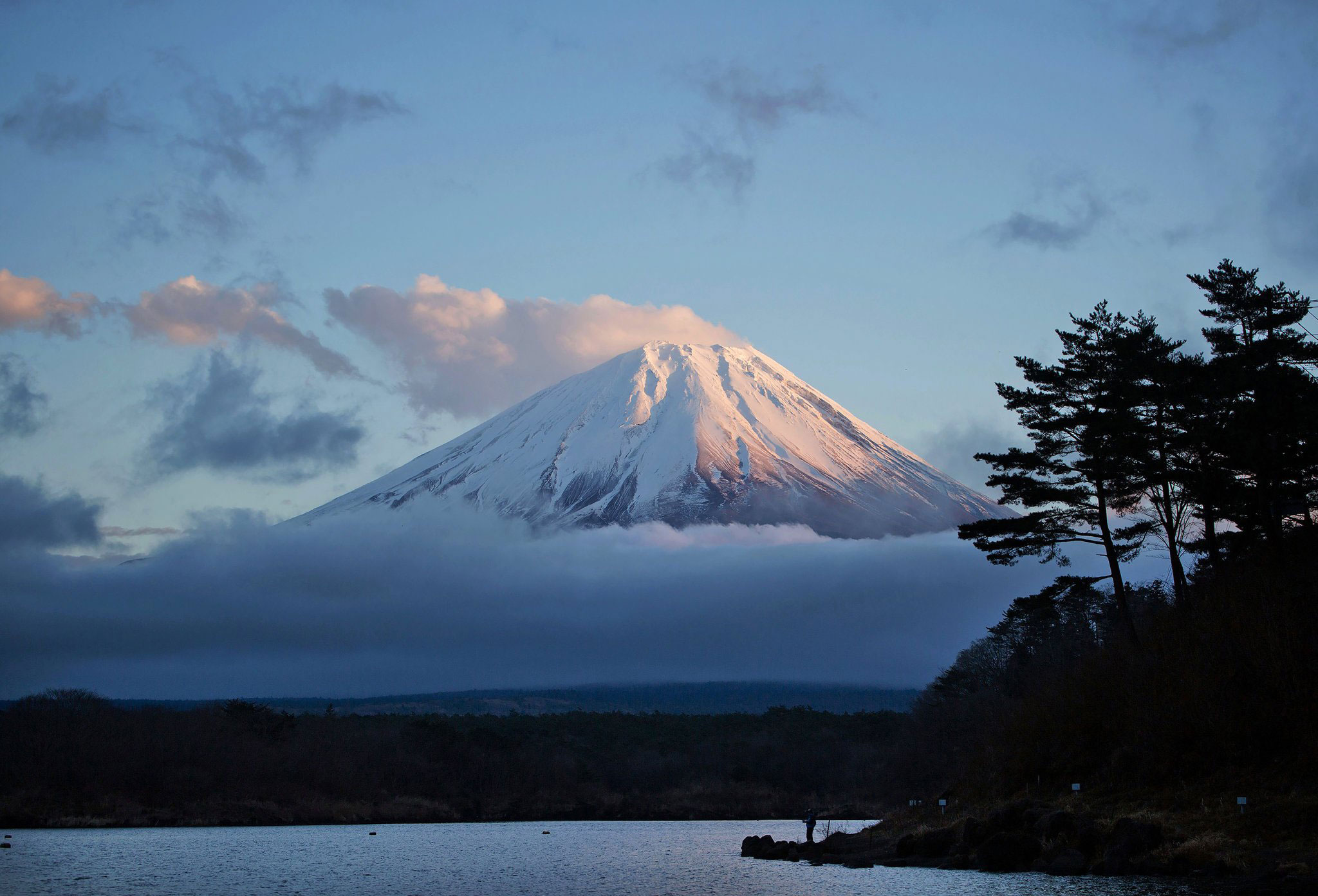Japan Travel: Aokigahara
Aokigahara

Photo credits: Ko Sasaki for The New York Times
Jukai, the sea of trees in which the soul drowns
At the foot of Mount Fuji, born from the volcanic eruption of Mount Nagao in 864 C.E., lies Aokigahara (青木ヶ原) best know with the name of Jukai (樹海, sea of trees). It is a thick forest that extends for 35 km² and that is made of caves and a maze-like vegetation with its cypresses, oaks and shrubs, including the Japanese snow flower. Its particular conformation prevents wind and solar rays from entering, giving it a spectral and silent appearance. In winter the thick fog that surrounds it forbids access to visitors who are even unable to find the entrance.
That of Aokigahara is a sad story because leaving the official paths means getting lost in its immense labyrinthine structure. Those who usually abandon the established path have only one intention: suicide. Due to this, it is not difficult to come across sign boards in both Japanese and English that try to dissuade people with macabre intentions.
“Your life is a precious gift from your parents”
“Please consult police or a doctor before you decide to die“
“Do not keep it to yourself, talk about your troubles”

Photo credits: Google images
The suicide forest
Statistics about Jukai, that go from 1950 up to today, will give you chills: from 30 to 105 suicides a year. In 1970 the Japanese government decided to set up a special annual patrol made of police officers, volunteers and journalists. This patrol is committed to searching and removing corpses, but this does not exclude the terrible possibility of running into skeletons and rotten bodies when walking through the forest. It is also possible to find Ema: wooden plaques on which suicides wrote their curses against those who forced them into taking their own lives.
Stepping away from the official path also means meeting colorful thread stretched between the trees, and this is because not all the people who enter the forest have decided to die. Some just want to reflect and these threads are necessary to find the way in case someone decides to live. However, following them almost always leads to something: some objects, an abandoned tent and, in the worst case, the lifeless body of someone who made the wrong choice.
There is another peculiarity that makes Aokigahara disturbing and mysterious: smartphones and all electronic devices stop working in the brush and the compasses go haywire. Finding the north is impossible. All this is caused by the high rate of magnetite, the mineral with the strongest magnetic properties.

Photo credits: Google images
The spirits of Jukai
In ancient times it was said that Kodama (木 魂) resided there, spirits of the trees that imitate the voices of the dead. Since they possess supernatural powers, cutting down a tree that is believed to house a kodama is considered a source of misfortune. The Japanese therefore use to mark the trunks of those trees with a sacred rope called Shimenawa. On the contrary, seeing a Kodama is considered a good omen because it means that the place is alive and full of positive energy.
But Kodama are not the only beings who are said to inhabit this place. The forest seems to be infested with real ghosts, the Yūrei. The term is made up of yū (幽 “flebile”, “evanescent”, but also “obscure”) and rei (霊 “soul” or “spirit”). A Yūrei embodies the soul of those who died of violent death, because they committed suicide or because they were murdered. Unable to leave the world of the living, to reach the afterlife in peace they need to bring other lives with them.

Photo credits: Google images
Novels and Films in the mass culture
In 1960 Nami no tō (波 の 塔) “Tower of Waves” by Seichō Matsumoto was published, a book that speaks of two lovers who take their lives in the forest. Matsumoto describes Jukai as “the most beautiful abandoned and wild forest that exists. A perfect place to die in secret”.
In recent years, Hollywood has created a series of films. In 2013, “Grave Halloween” came out, in which a young woman goes to Aokigahara with her friends to find her mother’s body, a biologist who had disappeared in the forest. “The sea of trees” directed by Gus Van Sant comes to light in 2015, and the plot sees an American man who goes to Aokigahara to take his own life and there meets a Japanese man with the same intentions. In 2016, the horror-thriller “Jukai – The Forest of Suicides” invades cinemas, in which a girl travels to Aokigahara to find her lost twin sister.
Share this:
- Click to share on Facebook (Opens in new window)
- Click to share on Twitter (Opens in new window)
- Click to share on Tumblr (Opens in new window)
- Click to share on Pinterest (Opens in new window)
- Click to share on Telegram (Opens in new window)
- Click to share on WhatsApp (Opens in new window)
- Click to share on Reddit (Opens in new window)
- Click to print (Opens in new window)






